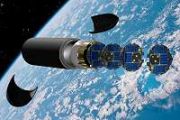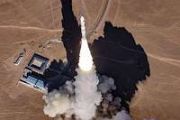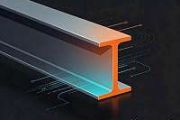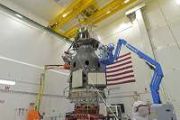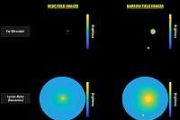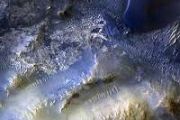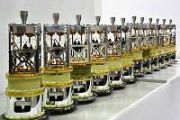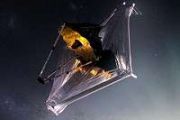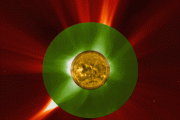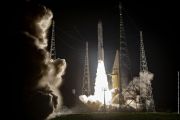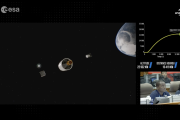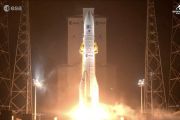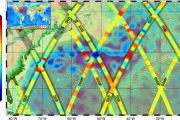
Copernical Team
Rare opportunity to study short-lived volcanic island reveals sulfur-metabolizing microbes
 In 2015, a submarine volcano in the South Pacific erupted, forming the Hunga Tonga Hunga Ha'apai island, destined to a short, seven-year life. A research team led by the University of Colorado Boulder and Cooperative Institute for Research in Environmental Sciences (CIRES) jumped on the rare opportunity to study the early microbial colonizers of a newly formed landmass and to their surprise, the
In 2015, a submarine volcano in the South Pacific erupted, forming the Hunga Tonga Hunga Ha'apai island, destined to a short, seven-year life. A research team led by the University of Colorado Boulder and Cooperative Institute for Research in Environmental Sciences (CIRES) jumped on the rare opportunity to study the early microbial colonizers of a newly formed landmass and to their surprise, the Star visibility eroding rapidly as night sky gets brighter
 Light pollution is growing rapidly and in some places the number of stars visible to the naked eye in the night sky is being reduced by more than half in less than 20 years, according to a study released Thursday.
The researchers, whose findings were published in the journal Science, said the increase in light pollution - skyglow - that they found was much larger than that measured by sat
Light pollution is growing rapidly and in some places the number of stars visible to the naked eye in the night sky is being reduced by more than half in less than 20 years, according to a study released Thursday.
The researchers, whose findings were published in the journal Science, said the increase in light pollution - skyglow - that they found was much larger than that measured by sat Ingenuity's 40th flight on Mars tracks a rocky road
 NASA's Ingenuity Mars Helicopter has acquired new images using its high-resolution color camera. The camera, which is mounted in the helicopter's fuselage, was pointed approximately 22 degrees below the horizon during the flight. The image shows the tracks of Perseverance running alongside a rocky outcrop.
On January 19, 2023 (Sol 681 of the Perseverance rover mission), Ingenuity completed
NASA's Ingenuity Mars Helicopter has acquired new images using its high-resolution color camera. The camera, which is mounted in the helicopter's fuselage, was pointed approximately 22 degrees below the horizon during the flight. The image shows the tracks of Perseverance running alongside a rocky outcrop.
On January 19, 2023 (Sol 681 of the Perseverance rover mission), Ingenuity completed Star visibility eroding rapidly as night sky gets brighter: study
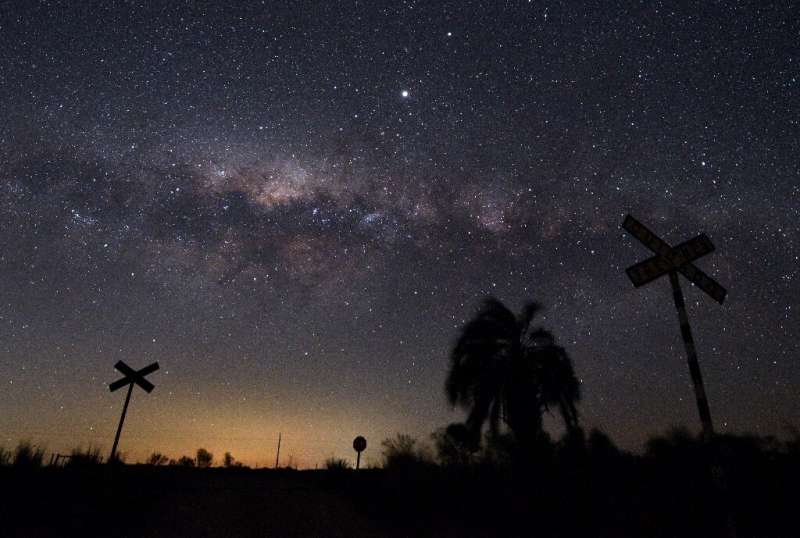
Light pollution is growing rapidly and in some places the number of stars visible to the naked eye in the night sky is being reduced by more than half in less than 20 years, according to a study released Thursday.
The researchers, whose findings were published in the journal Science, said the increase in light pollution —skyglow—that they found was much larger than that measured by satellite observations of Earth at night.
For the study of the change in global sky brightness from artificial light, the researchers used stellar observations from 2011 to 2022 submitted by more than 51,000 "citizen scientists" around the world.
Exotic water ice contributes to understanding of magnetic anomalies on Neptune and Uranus
 Ordinary everyday ice, like the ice produced by a fridge, is known to scientists as hexagonal ice (ice Ih), and is not the only crystalline phase of water. More than 20 different phases are possible. One of them, called "superionic ice" or "ice XVIII", is of particular interest, among other reasons, because it is thought to make up a large part of Neptune and Uranus, planets frequently referred
Ordinary everyday ice, like the ice produced by a fridge, is known to scientists as hexagonal ice (ice Ih), and is not the only crystalline phase of water. More than 20 different phases are possible. One of them, called "superionic ice" or "ice XVIII", is of particular interest, among other reasons, because it is thought to make up a large part of Neptune and Uranus, planets frequently referred From Europe to Jupiter via Kourou
 "Trois, deux, un - et decollage!" This is how the last three seconds will be counted down in the control centre in Kourou, French Guiana, this April before one of the last Ariane 5 launch vehicles lifts off from Europe's Spaceport. The target of the European Space Agency's (ESA) largest planetary mission to date is Jupiter and its large icy moons Ganymede, Callisto and Europa. The Jupiter Icy Mo
"Trois, deux, un - et decollage!" This is how the last three seconds will be counted down in the control centre in Kourou, French Guiana, this April before one of the last Ariane 5 launch vehicles lifts off from Europe's Spaceport. The target of the European Space Agency's (ESA) largest planetary mission to date is Jupiter and its large icy moons Ganymede, Callisto and Europa. The Jupiter Icy Mo Airbus finalises JUICE ready for its mission to Jupiter
 The Airbus-built JUICE (JUpiter ICy moons Explorer mission) spacecraft will shortly leave Toulouse, France, for Kourou, French Guiana, for lift-off on an Ariane 5 in April 2023. Shipment is expected in early February.
The spacecraft has been at Airbus in Toulouse since August 2021 for final assembly and test. This included integration of the final instrument units and the largest solar arr
The Airbus-built JUICE (JUpiter ICy moons Explorer mission) spacecraft will shortly leave Toulouse, France, for Kourou, French Guiana, for lift-off on an Ariane 5 in April 2023. Shipment is expected in early February.
The spacecraft has been at Airbus in Toulouse since August 2021 for final assembly and test. This included integration of the final instrument units and the largest solar arr Sols 3718-3720: Go For Drilling at Encanto
 In the previous plan, Curiosity conducted a preliminary assessment of the potential drill target "Encanto" (as seen in the above MAHLI image) and today we received the data. The drill preload test and contact science data look good, so we are GO for our third attempt to get a sample of this marker band.
Today's 3-sol plan includes the full drill on the first sol, followed by portion charac
In the previous plan, Curiosity conducted a preliminary assessment of the potential drill target "Encanto" (as seen in the above MAHLI image) and today we received the data. The drill preload test and contact science data look good, so we are GO for our third attempt to get a sample of this marker band.
Today's 3-sol plan includes the full drill on the first sol, followed by portion charac Astronauts conduct first ISS spacewalk of 2023
 Two astronauts embarked on the first spacewalk of 2023 on Friday as they worked toward upgrading the International Space Station's power generation system.
NASA astronaut Nicole Mann teamed up with Koichi Wakata of the Japan Aerospace Exploration Agency for the morning spacewalk, which NASA officials said lasted seven hours and 21 minutes. They installed a modification kit at the far en
Two astronauts embarked on the first spacewalk of 2023 on Friday as they worked toward upgrading the International Space Station's power generation system.
NASA astronaut Nicole Mann teamed up with Koichi Wakata of the Japan Aerospace Exploration Agency for the morning spacewalk, which NASA officials said lasted seven hours and 21 minutes. They installed a modification kit at the far en Chinese astronauts send Spring Festival greetings from space station
 The Shenzhou-15 astronauts Fei Junlong, Deng Qingming and Zhang Lu sent their Spring Festival greetings from China's Tiangong space station in a video released by the China Manned Space Agency (CMSA) on New Year's Eve.
The trio, dressed in blue jumpsuits with dark red patterns, each held a sticker showing their own calligraphy. Two of the stickers were written with the Chinese character "f
The Shenzhou-15 astronauts Fei Junlong, Deng Qingming and Zhang Lu sent their Spring Festival greetings from China's Tiangong space station in a video released by the China Manned Space Agency (CMSA) on New Year's Eve.
The trio, dressed in blue jumpsuits with dark red patterns, each held a sticker showing their own calligraphy. Two of the stickers were written with the Chinese character "f 



